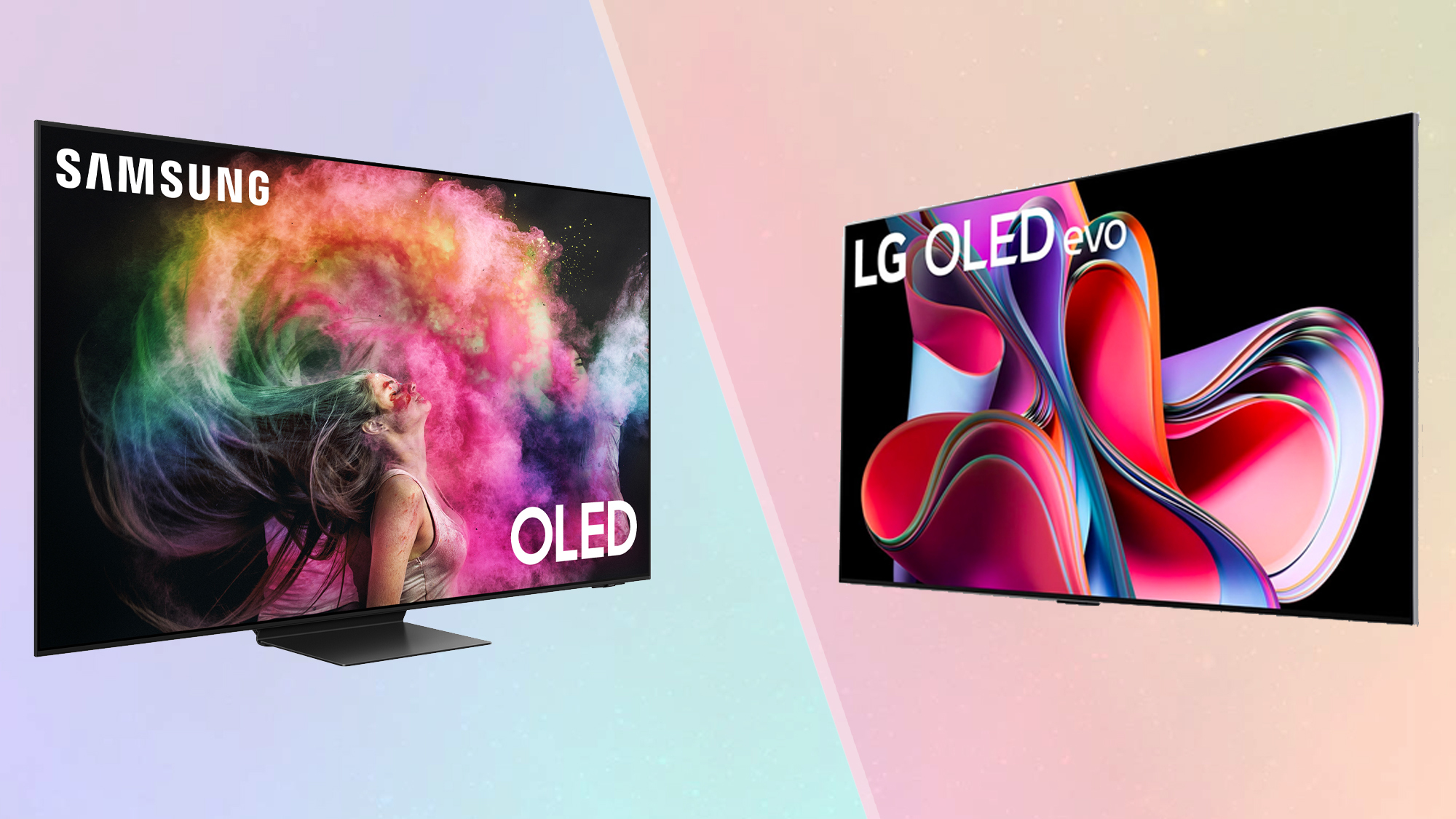
A Samsung S95C vs LG G3 OLED comparison is what you need if you're trying to figure out which is the best OLED TV for you.
After a few years of incremental updates, OLED technology saw immense innovation in 2022. From LG’s second-generation OLED Evo technology making its way into the LG C2 OLED and the first generation of QD-OLED TVs like the Sony A95K and Samsung S95B, it was a huge year for TV lovers.
And that’s not going to change this year. Because this year, Samsung is introducing its second-generation QD-OLED, the Samsung S95C, and it’s going up against the LG G3 OLED that uses third-generation OLED panels that use Micro Lens Array (MLA) technology.
The result, in both cases, are some of the brightest OLED TVs with the best off-axis viewing angles we’ve yet to see. It’s led to a bit of an impasse for TV buyers — which TV should you buy when both models are making such big promises?
We’ve done some digging on each and, alongside our own data from our testing labs, can help you decide between the Samsung S95C vs LG G3 OLED.
Samsung S95C vs LG G3 OLED: Price
Before we dive deeper into the technology side of things, let’s cover the most important aspect of each TV — their price.
For the Samsung S95C, pricing starts at $2,499 for the 55-inch model. There’s also a 65-inch model for $3,299 and finally a 77-inch model for $4,499.
Get instant access to breaking news, the hottest reviews, great deals and helpful tips.
You’re not going to believe this, but the LG G3 OLED is available in the same sizes at the exact same price except for the even larger 83-inch model that’s $6,499.
In short, you’re paying the same price for either TV but have the option to go larger if you want the LG G3 OLED in an 83-inch screen size and don’t mind paying over six grand for it.
Samsung S95C vs LG G3 OLED: Design
Despite some very apparent similarities, there are two major design differences here: the OneConnect Box that you’ll only find on the Samsung S95C and the flush wall mount that comes with the G3 OLED. Both are great design additions, but they function differently.
Samsung’s OneConnect Box is all about hiding the cables — you’ll connect all of the cables to one box instead of the back of the TV. That means all your HDMI connections, OTA antenna, audio cables and ethernet can be hidden away.
The LG G3 OLED doesn’t have a way to hide cables without custom installation, but instead it comes with a flush wall mount. The TV then sits millimeters from the wall, giving it that signature gallery look that the G-Series is known for.

So what are the downsides here? Unfortunately, the G3 OLED only comes with the flush mount — if you want to put it on a table or entertainment center, you’ll have to buy the stand separately. And the OneConnect Box? Well, it still requires you to run a single cord from the OneConnect Box to the TV itself — so it’s not exactly the cable-free solution many of us would like.
Other aspects of the design that are worth considering are their HDR support — LG supports Dolby Vision while Samsung sticks to HDR10+ — and smart platform. For LG, the smart platform is WebOS 23 that has a new way to calibrate your picture through a series of photos, while Samsung has its latest version of Tizen. Both smart platforms are roughly the same in terms of number of streaming services on board and performance, but I like LG’s WebOS a bit more because it doesn’t make you sign in to download new apps.
Samsung S95C vs LG G3 OLED: Performance
OK, so they’re tied on price point and they each have something good — and something bad — about their designs. Hopefully the performance data sets them apart. It does…sort of.
According to LG’s calculations, the G3 OLED with MLA is 70% brighter than a first-generation OLED TV. LG doesn’t give out exact numbers on brightness, but we can use our test data for the LG C1 OLED to extrapolate some data.
In its out-of-the-box Standard Mode, the LG C1 OLED achieved a peak brightness of 749.66 nits in a 10% window. With a 70% boost, we can expect the LG G3 OLED to put out around 1274.422 nits in the same window if LG’s percent increase value holds true.
In the very same test, the Samsung S95C OLED — tested just a few weeks ago — achieved a peak brightness of 1369.364 nits. Point to Samsung.
Next, let’s take a look at color saturation and color accuracy. The LG G2 OLED, the G3’s predecessor, was able to cover 134.44% of the Rec.709 color space with a Delta E score that measures how far off those colors were of a respectable 1.4891 (lower is better).
On the Samsung side of things, the S95C was able to achieve 141.46% of the Rec.709 color space with a Delta E of 1.21. Both those numbers are better than what we saw from last year’s LG OLED models, but only by a small margin. If LG was able to boost color saturation and accuracy in the G3 model — a real possibility — then we could have another tie on our hands.
Based on all the data we’ve collected in the lab so far, it looks like the Samsung S95C OLED is going to edge out the G3 OLED in many key metrics. That said, we don’t have the exact measurements for the LG G3 OLED yet — as the G3 just went up for sale last week.
Samsung S95C vs LG G3 OLED: What should you buy
So which OLED TV should you buy? I’d make the argument that the Samsung S95C is probably the better buy right now. Samsung's latest QD-OLED appears to offer a higher peak brightness and similar color saturation numbers to LG’s second-generation OLED. It’s possible that the new MLA panels might score slightly higher than LG’s predictions, but with real data we can safely say that the Samsung S95C OLED has delivered on its promises.
We’ve yet to fully review either TV yet given how new they are on the market, so it could be worth holding off a few more weeks before buying either. That said, if you just have to have a new TV this very minute, then the Samsung S95C gets the nod.
Looking for a cheaper OLED TV? Check out the newly released LG C3 OLED.

Nick Pino heads up the TV and AV verticals at Tom's Guide and covers everything from OLED TVs to the latest wireless headphones. He was formerly the Senior Editor, TV and AV at TechRadar (Tom's Guide's sister site) and has previously written for GamesRadar, Official Xbox Magazine, PC Gamer and other outlets over the last decade. Not sure which TV you should buy? Drop him an email or tweet him on Twitter and he can help you out.
 Club Benefits
Club Benefits





